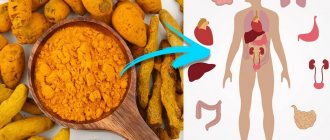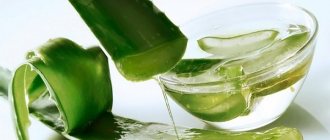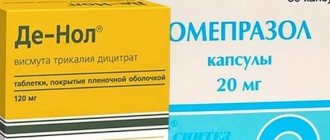Turmeric is a healthy spice that is produced from the herbaceous plant of the same name, which grows primarily in Asia. This plant is officially recognized as medicinal and is included in many pharmacopoeias around the world. One of the therapeutic properties is the ability to stimulate the liver and restore it. Why exactly is turmeric beneficial for the liver and how to take it - further details.
Composition and type of turmeric for liver treatment
The above-ground part of the plant is rarely used for medicinal and culinary purposes, since the highest concentration of active substances is observed in the root. Spices and spices are produced from the rhizome. The most common method of harvesting is drying and grinding into powder. It is in this form that it is more convenient to use plants for therapeutic purposes. Due to drying at low temperatures, the rhizome retains a large number of active components that affect the body.
Powder composition:
- curcumin (dye, antioxidant, stimulant);
- vitamins of group B, PP, C, A, L;
- calcium;
- iodine;
- iron;
- phosphorus;
- copper;
- potassium;
- sodium;
- organic acids.
Curcumin is the main active ingredient, since it is it that provides a pronounced therapeutic effect with regular, systematic use. All components are presented in an easily digestible form and are almost completely absorbed in the intestines, penetrating into the bloodstream for further effects on the body.
Features of the composition
The oriental spice turmeric is endowed with abundant healing power. Moreover, the healing power of the plant is based on its unique composition, in which the main role is played by the substance curcumin. In addition to this active agent, the spice contains elements of the following main groups of chemicals:
- Vitamins. Their presence is especially valued in this spice: ascorbic acid, tocopherol, pyridoxine and other representatives of the B vitamin group are far from the complete composition of the “vitamin” team. Substances in this group nourish liver tissue.
- Mineral components are also represented by micro- and macroelements, among which there are such vital substances as iron, phosphorus, magnesium, calcium. Mineral compounds stimulate biochemical processes, participate in the synthesis of enzymes, and ensure normal patency of the network of small vessels.
In addition, turmeric contains:
- essential oils;
- tannins;
- organic acids;
- flavonoids;
- vegetable proteins and fats;
- carbohydrates;
- fiber and many other useful components.
Such an impressive set of substances in composition and diversity provides the same diverse medicinal properties of the spice for liver pathologies. This aspect deserves special attention.
Beneficial features
The main therapeutic property of the plant is its ability to enhance phagocytic activity. That is, the components of the plant stimulate the activity of immune cells (phagocytes), and they, in turn, absorb and remove from the body all harmful substances and microorganisms, damaged cells and free radicals. The herbal remedy is useful for the liver due to the following properties:
- Pronounced stimulation of bile production, its dilution and excretion through the gallbladder ducts.
- Protecting hepatocytes from free radicals, preventing oxidative stress.
- Protection against the development of pathological tumor processes, cancer prevention.
- Restoration of hepatocytes after increased toxic loads.
- Improving the filtration properties of the organ by restoring damaged cells.
- Improving the body's resistance to viral load in hepatitis.
- Reducing the load on the organ when digesting fats and metabolizing toxic substances.
- Elimination of the inflammatory process and acceleration of recovery of affected tissues.
Important note: turmeric is useful only in its raw form; if it is exposed to heat, some of the active substances are lost and no pronounced effect is observed.
Benefits for the liver
Turmeric helps improve liver function and keep it healthy. It activates the mechanism of bile formation and improves its outflow. Products based on it cleanse the cells and intercellular space of the liver parenchyma from the end products of metabolism, fatty deposits, as well as from toxic compounds that have entered the body from the outside or formed in it.
The active substances of the plant are able to protect hepatocytes from the harmful effects of infectious agents. They are able to stop the growth of malignant cells.
The plant restores the membranes of glandular organ cells, enhances their regeneration, thereby protecting the body from pathological changes. The complex composition and beneficial properties of the root make it possible to widely use this herbal remedy for the treatment of viral hepatitis, hepatosis, fibrosis and other pathological liver damage (toxic, medicinal and alcoholic).
We recommend that you read What is corn?
What liver diseases does turmeric treat?
The seasoning should not be considered as a medicine, since an integrated approach is important in the treatment of liver diseases. Turmeric promotes faster recovery and makes the effects of medications more pronounced due to its supporting properties.
The herbal remedy is used in the treatment of such diseases and conditions:
- hepatitis of viral etiology;
- alcoholic liver disease;
- bile stagnation;
- steatosis;
- cirrhosis in the early stages.
In case of diagnosis of these diseases, it is useful to include the plant in the diet or use it according to the scheme, but in parallel with taking the main medications prescribed by the doctor. It is important to consult and find out whether the course of pharmacotherapy is compatible with this spice.
Turmeric for the liver: contraindications
Only those who have identified contraindications cannot be treated with turmeric and eat it as a seasoning. It is strictly forbidden to use turmeric for these diseases and conditions:
- GSD at the stage of formation of calcified gallstones;
- peptic ulcer of the stomach or intestines;
- disorder of hematopoietic processes;
- individual intolerance.
It is temporarily prohibited to use the product during pregnancy and breastfeeding. In the first case, there is a risk of miscarriage or premature birth. In the second case, there is a danger that the child will develop an allergic reaction, since the components of the herbal remedy penetrate into the mother's milk.
Recipes
Traditional medicine involves using the annual rhizome alone or in combination with other products and herbs. Popular recipes that are used to treat liver diseases are described below.
With honey
When combined with honey (information about its benefits and harm to the liver is widely used in folk medicine), the total effect of the ingredients increases. 100 grams of rhizome powder is mixed with the same amount of natural honey and taken 1 teaspoon 3-4 times a day before meals. It is recommended to drink with warm water for faster absorption of the active ingredients.
Tea
Plant materials are used to make tea or water infusion. To obtain a therapeutic effect, it is important to maintain the following proportions:
- tea – ½ teaspoon of powder per 200 ml of water;
- infusion - a heaping teaspoon per 200 ml of boiling water.
It is necessary to brew and infuse the liquid under the lid, and after cooling, take it 3-4 times a day before meals. Drink tea in an amount of 200 ml at a time, and divide the infusion into 3-4 doses.
With ginger
In combination with ginger, the choleretic effect is enhanced. In addition, ginger additionally contains another type of antioxidants and together protects against the degeneration of tissues and cells. Medicine ingredients:
- dried ginger (powder) – 2 tablespoons;
- turmeric – 2 tablespoons;
- honey – 1 tablespoon;
- olive oil – 2 tablespoons.
Mix everything thoroughly and place in a resealable glass container. Keep refrigerated. Use a teaspoon before meals with warm boiled water.
Vodka tincture
Turmeric can be infused in vodka only for preventive use. If you have complicated pathologies or liver diseases, you should never use ethanol-based products, as it is toxic to the organ. Tincture recipe:
- 50 grams of powder;
- 500 ml vodka.
Pour and leave in a dark place, shaking occasionally for 2 weeks. After this, take 20 ml before each meal, but not longer than 14 days. If medical alcohol is used to prepare the tincture, then the proportions are as follows: per 100 ml, 1 tablespoon of raw materials.
With hemp oil
Curcumin is absorbed much better if taken in combination with fats of plant and animal origin. Hemp oil is an ideal option because it additionally contains alkaloids that enhance the effects of curcumin. Use this way - mix 50 ml of oil with 20 grams of raw materials, leave for 2-3 days and drink 1 teaspoon 3-5 times a day. Before taking the product, you must shake it thoroughly.
Features of use for fatty liver hepatosis
The main condition for recovery and elimination of the symptoms of fatty liver is the elimination of factors that negatively affect hepatocytes. Herbal medicine will be meaningless if you continue to drink alcohol and fatty foods.
We recommend that you read Beans for children
In order to stop the pathological process with the help of a folk remedy, you should not only change your lifestyle, but also reconsider your eating habits. Experts recommend limiting portions, adding healthy foods to your diet and eliminating foods that negatively affect the liver and contribute to excess weight. It is necessary to give up light carbohydrates, sweets, fatty and smoked foods. Also exclude canned and pickled foods from the menu. Preference is given to boiled, baked, stewed and steamed foods.
It is recommended to take turmeric-based products before meals. At least 30 minutes should pass between taking the medicinal product and food. Therapy should be carried out only with freshly prepared drinks. The shelf life of the root, when prepared, is no more than a day. For fatty hepatosis, it is useful to alternate turmeric drinks with a decoction prepared from flaxseed.
Turmeric for the liver for preventive purposes
The most pronounced effect is observed with the preventive use of turmeric for the liver. This plant has a complex effect on the entire body, therefore it improves not only the functioning of the liver. For preventive purposes, the seasoning can be used in the following ways:
- Include in the diet by adding to various dishes and snacks.
- Take ½ teaspoon every other day with plenty of water.
- Dissolve 1 teaspoon in a glass of water and take 50 ml of this liquid 3 times a day before meals.
- Add 2-3 pinches to cold and hot drinks.
- Add to freshly prepared vegetable and fruit juices.
- Take a pinch before eating.
Prophylactic use of the seasoning provides the following effects:
- protects organ cells from damage;
- normalizes its functioning;
- reduces toxic load;
- prevents the development of inflammation during hepatitis;
- slows down the process of dystrophy in cirrhosis;
- contributes to the normalization of metabolic processes;
- prevents the development of malignant tumors;
- improves blood supply and tissue nutrition.
Prevention, as well as treatment with the use of spices, is possible only if there are no temporary or categorical contraindications.
special instructions
The main caution is that you should not overuse the rhizome, because it is rich in active components, which, when accumulated, can have the opposite effect and only worsen the condition. The optimal dosage per day is calculated individually, depending on weight. For every 10 kg of body weight, it is recommended to consume no more than 1 g of powder. For children under 12 years of age, use is strictly contraindicated, even in minimal doses, due to the increased risk of developing an allergic reaction.
The second important nuance is that you cannot use fresh root juice in a dose of more than 1 teaspoon, as it is toxic. It is effective in treating diseases of other organs and systems, but in the case of the liver it can only worsen the situation. In case of juice poisoning, it is necessary to urgently lavage the stomach and take enterosorbent (activated carbon, smecta).
It is not recommended to take turmeric for the liver along with enzyme preparations. The fact is that this plant stimulates the production of natural digestive enzymes, and an excess of such substances in the long term can lead to the following consequences:
- development of hyperacid gastritis;
- flatulence;
- the appearance of ulcers;
- bleeding;
- imbalance of intestinal microflora.
In the stage of exacerbation of gastrointestinal diseases, taking the seasoning is not recommended. It is especially dangerous to use the spice in acute pancreatitis, as this may worsen the condition.
Turmeric will not be useful for the liver if stones have formed in the bile ducts - due to increased secretion of bile, blockage of the lumen may occur, which can lead to extremely negative consequences for the body. Another important instruction is that when using the spice, you need to drink more fluid, as it has a pronounced diuretic effect. It is advisable to replenish moisture deficiency with mineral water.
Use for diseases
Turmeric is used quite often even in the most advanced cases of liver disease. It helps cleanse the gland of toxins and start the natural regeneration of its tissues.
Hepatosis
Recent studies have shown that curcumin, a component of turmeric, helps lower LDL levels, regulate glucose concentrations, break down fat deposits and remove excess fat from the liver. This substance also helps modify the production of liver enzymes, which, in turn, helps reduce body weight.
Cirrhotic pathology
Turmeric can have the following positive effects on the liver, preventing the development of cirrhosis:
- Controls the level of TGF-beta protein;
- The substances in the composition help prevent the development of pathology caused by genetic predisposition;
- Eliminates inflammatory processes in cases of already developed cirrhosis;
- Lowers cholesterol levels, prevents the development of fatty hepatosis and obesity;
- Increases the protective functions of the liver, reducing the harmful effects of alcohol on the gland.
Fibrosis
Substances in the spice help launch regenerative processes in the liver, thereby protecting it from the effects of chemicals and third-party medications. Turmeric can stop the development of chronic fibrosis, as well as stop inflammation and eliminate oxidative stress.
Side effects
Herbal remedies rarely produce side effects, but with long-term use there is a risk of developing negative consequences. If you take the seasoning every day for longer than 30-45 days at a dose higher than 5 grams, there is a risk of developing the following consequences:
- heartburn;
- loss of appetite;
- nausea;
- fragility of blood vessels;
- diarrhea.
If side effects occur, you should take a break and consult a doctor to rule out other causes of unpleasant symptoms.
Indications
Recently, scientists are increasingly exploring the benefits of turmeric for various organs of the body. Recent tests have proven that the spice is capable of restoring organ cells, which greatly facilitates the process of treatment and prevention of organ function.
The main indications for the use of turmeric as part of medicinal and cleansing recipes:
- hypotension of the gallbladder;
- curvature of the bile ducts;
- cirrhosis;
- diabetes;
- arthritis;
- migraine;
- weak immunity;
- during the recovery period after illness or surgery.
Turmeric is especially useful for the liver; how to take this type of spice and in what cases? Before you decide to cleanse your body and gallbladder with the help of a spice, you need to learn how to use turmeric for cleansing correctly. You cannot carry out the procedure for removing bile on your own; you must first consult a doctor.
Read on topic: How to cleanse the liver and gallbladder at home










